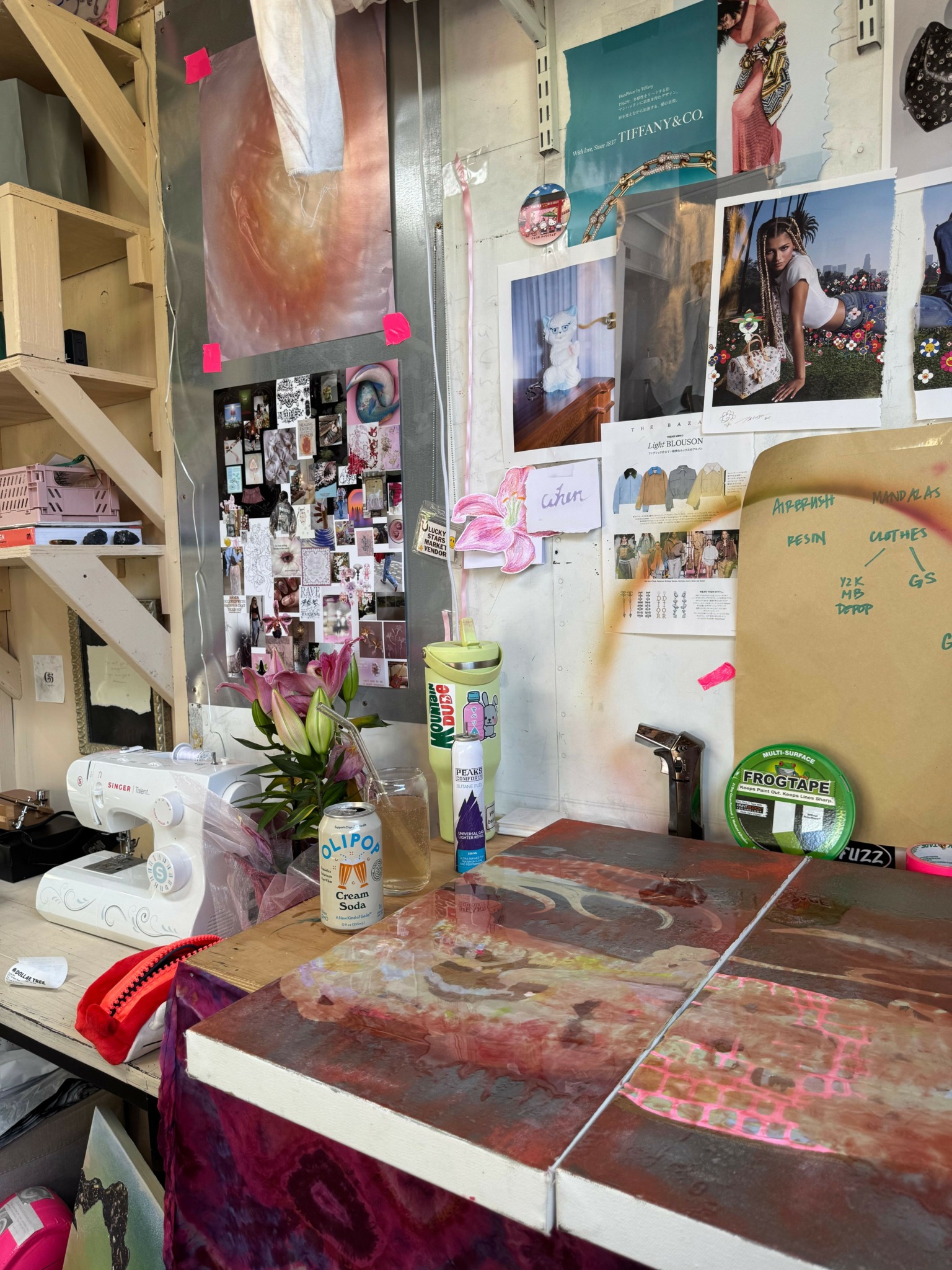We’re excited to introduce you to the always interesting and insightful Katie Cartwright. We hope you’ll enjoy our conversation with Katie below.
Katie, thanks for joining us, excited to have you contributing your stories and insights. Do you wish you had started sooner?
If I could go back in time, I don’t think I’d start my creative career any sooner or later—I think everything unfolded exactly as it needed to. I’ve started and stopped multiple times, but honestly, I think that’s because I wasn’t fully ready to rely on myself yet.
My first upcycled clothing brand was back in college. I called it Rust and Stardust, after a Nabokov quote: “And the rest is rust and stardust.” I loved the idea of eternal endings and beginnings, which, looking back, feels really fitting. I eventually closed that chapter because life took over, and at the time, I wanted the stability of a 9-to-5 after graduation.
In hindsight, I really don’t regret it! I’ve learned so much from working in other companies—I’ve had 26 jobs, everything from project management in construction to hospitality, building management, retail, research assistant, university admin, graphic design, the list goes on… I’ve seen and helped build so many organizational systems that it’s really helped me fine-tune how I want to run my own business now based on all of that exposure, and trial and error.

As always, we appreciate you sharing your insights and we’ve got a few more questions for you, but before we get to all of that can you take a minute to introduce yourself and give our readers some of your back background and context?
I’m Katie, an artist and designer based in San Diego. I paint and do graphic design, and my work extends into fashion through my clothing business, gold3nspiral. I’ve always been drawn to the idea of interconnectedness—how everything we create, experience, and feel informs everything else. I used to struggle with the fact that I don’t just do one thing. I paint, I make clothes, I do graphic design and photography, and for a while, I thought I needed to narrow my focus. But over time, I realized that working across different mediums isn’t a distraction—it’s my greatest strength. Each practice feeds into the others: my paintings inspire my clothing designs, the photography of my work makes me notice new details, and even the music I’m into shapes the feeling of each piece.
At the start of this year, I spent three weeks traveling through Japan, and it left a huge impression on me, especially in terms of design. Everything felt so intentional yet organic. I became fascinated with kintsugi, the art of repairing broken pottery with gold, and it resonated deeply with how I approach creativity—turning mistakes into the most gorgeous parts. Even if I’m frustrated with a painting, I’ll think to myself, I’ll never be here, finishing this painting again… pretty soon it will be done, and I’ll be working on something else, so let me cherish this process– even if it’s a little frustrating. What an honor it is to be here in this moment..
I suppose at the heart of my work is a love for transformation. I want people to walk away from my work feeling connected—to a memory, to themselves, or to the mystery of life.

How can we best help foster a strong, supportive environment for artists and creatives?
I think the best way society can support artists and a thriving creative ecosystem is by fostering real connections between creators and consumers, being more mindful about what we buy, and actually valuing artistry over mass production.
To dismantle any of these big patterns we see—whether it’s overconsumption, fast fashion, or the way creative work gets undervalued—it really starts with personal reflection and open conversations. I know it’s hard when life moves so fast, but something that’s helped me be a more conscious consumer is really looking at the things I own and asking myself: What about this did I need or want at the time? What drew me to it? Because if you really know what you love, you naturally start aligning with the artists and makers who are creating those kinds of things.
Visiting local markets is another big one—it helps you feel more connected to your community, and that in turn makes the things you buy feel more meaningful. I feel like we all know the joy of saying, “Oh, an artist I love made this!” when someone asks where something is from, versus just saying, “Oh, it’s from Amazon.” Supporting artists isn’t just about buying their work—it’s about shifting how we engage with creativity and appreciating the people behind the things we surround ourselves with.

What do you think is the goal or mission that drives your creative journey?
I’ve always been interested in the underdog. One of my favorite aspects of my creative practice is finding ways to incorporate and embrace the mistakes along the way— because there are a lot. It’s a conscious choice to transform them into something beautiful, and sometimes I end up making them the focal point of a piece.
This is also why I love thrifting and running my depop; I love uncovering potential in discarded items, and i love that the community on depop sees the beauty in unique items. It’s a bit removed from the mass culture of fast fashion trends that I see in so many other online spaces. I hold this philosophy close in my personal life as well; taking a wrong turn can lead you down a path you never would have discovered otherwise. I feel like as long as you approach life with curiosity and stay guided by integrity, there are no wrong turns.
Contact Info:
- Website: https://www.katielinnaea.com
- Instagram: @katielinnaea.png
- Linkedin: https://www.linkedin.com/in/katiecartwright11/
- Other: depop: @gold3nspiral




